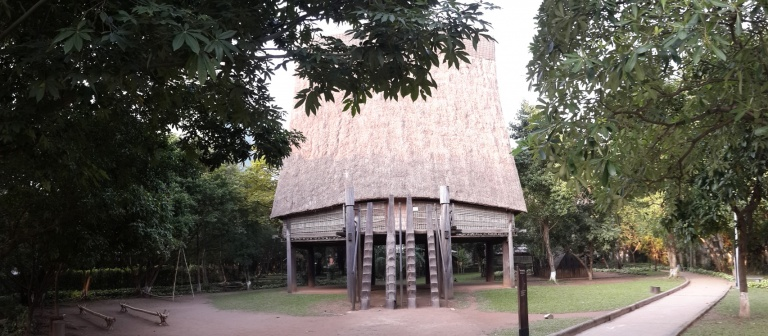


The Bahnar communal house is 19 meters in height including 3 meter stilts. Its floor area is more than 90 square meters.
A team of 40 Bahnar people came from Kon Rbang Village in KontumCity, in the Central Highlands, to build this house. It was modeled after the village's early 1920’s communal house. The most important tool in its construction is the axe, which is used to cut the wood and carve the trunks. The axe can also be used as a chisel to mortise the columns.
The high roof is supported by eight massive pillars, four of which are 60cm in diameter. The structure is composed of many other posts and beams arranged horizontally, vertically or diagonally at different heights. They serve to both connect and support the house. The longitudinal beams and purlins are 14 to 15m long. The sloping and curved roof is rounded at its lower part. It is not only attractive, but also helpful for wind resistance. This curve brings lightness, elegance, and the impression of a greater height.
Role of the communal house
The communal house has a significant meaning in villages. It is the largest and the most spectacular architecture, showing power and talent of the community.
Traditionally, the communal house was used for social and ceremonial activities. It was a place for guests to be received, for men to be together during their free time, for the elderly to transmit knowledge to younger generations, for old villagers to deal with village affairs, and for villagers to concentrate together in community events. Collective rituals were also held at the communal house. In the past, the youth were on duty here to prepare for fights or to defend the village. Young bachelors and widowers also spent nights in the communal house. Women did not usually enter this house.
Heads of sacrificed buffalos and hunted animals are often hung in the communal house. These are trophies and pride of the community. Other ritual objects and protecting talismans of the villages are also preserved in the communal house.